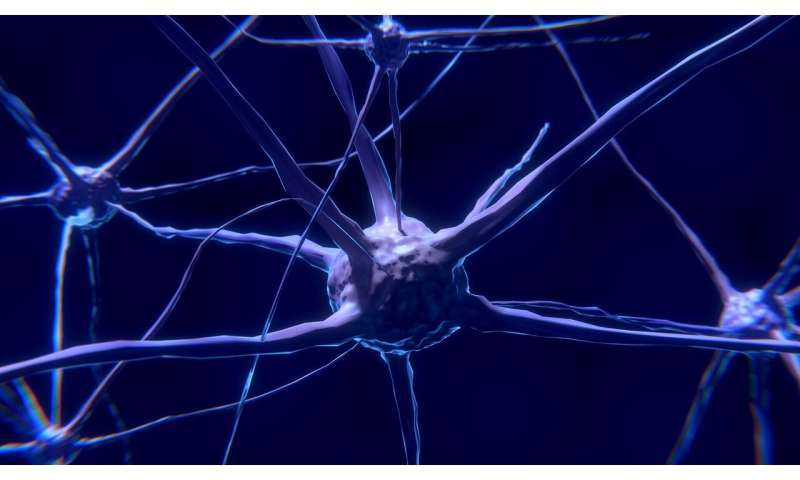
An international team of scientists from Gero Discovery LLC, the Institute of Biomedical Research of Salamanca, and Nanosyn, Inc. has found a potential drug that may prevent neuronal death through glucose metabolism modification in stressed neurons. The positive results obtained in mice are promising for future use in humans. The new drug could have applications in neurological conditions including amyotrophic lateral sclerosis, Alzheimer’s and Huntington’s diseases, traumatic brain injury and ischemic stroke. The results have been published in Scientific Reports.
Brain injuries and neurological disorders are key causes of death worldwide. According to WHO, stroke is the second-most common cause of mortality, and more than a third of people who survived a stroke have a severe disability.
And as the population ages, millions more people are poised to develop Alzheimer’s or Parkinson’s diseases in the near future. However, there are no effective treatments for major neurodegenerative diseases. It is thus critically important to understand the biology of these diseases and to identify new drugs capable of improving quality of life, survival, and, in the best-case scenario, curing the disease completely.
Glycolysis is generally considered as the metabolic pathway essential for cell survival since it meets cell energy needs in conditions of intensive energy consumption. However, it is known that in brain tissue, the situation is quite different—different cell types show distinct glucose metabolism patterns. In neurons, only a small portion of glucose is consumed via the glycolysis pathway. Astrocytes provide nutrients to neurons and use glycolysis to metabolize glucose. These differences are mostly due to a protein called PFKFB3, which is normally absent in neurons and active in astrocytes. In the case of certain neurological diseases, stroke being one of them, the amount of active PFKFB3 increases in neurons, which is highly stressful for these cells and leads to cell death.
An international team of researchers led by Peter Fedichev, a scientist and biotech entrepreneur from Gero Discovery, and professor Juan P. Bolaños from the University of Salamanca, suggested and further confirmed via in vivo experiments that a small molecule, the inhibitor of PFKFB3, may prevent cell death in the case of ischemia injury. Inhibition of PFKFB3 improves motor coordination of mice after stroke and reduced brain infarct volume. Moreover, in the experiments using mouse cell cultures, it was shown that PFKFB3 inhibitor protects neurons from the amyloid-beta peptide, the main component of the amyloid plaques found in the brains of Alzheimer’s disease patients.
Professor Juan P. Bolaños says, “Excitotoxicity is a hallmark of various neurological diseases, stroke being one of them. Our group has previously established a link between this pathological condition and high activity of PFKFB3 enzyme in neurons, which leads to severe oxidative stress and neuronal death.”
Olga Burmistrova, director of preclinical development in Gero Discovery, says, “We are glad that our hypothesis that pharmacological inhibition of PFKFB3 can be beneficial in an excitotoxicity-related condition such as stroke was confirmed. I would like to note that in our work, we used a known molecule to demonstrate that PFKFB3 blockage has a therapeutic effect. But we have also performed the same experiments with another proprietary small molecule designed by our company, and showed that it had a similar effect. There is, of course, still much work to do. We are currently investigating the efficacy of our compounds in the models of orphan excitotoxicity-related neurological diseases. We have already obtained good safety results in mice, and believe that we will be successful in our future investigations.”
Source: Read Full Article
